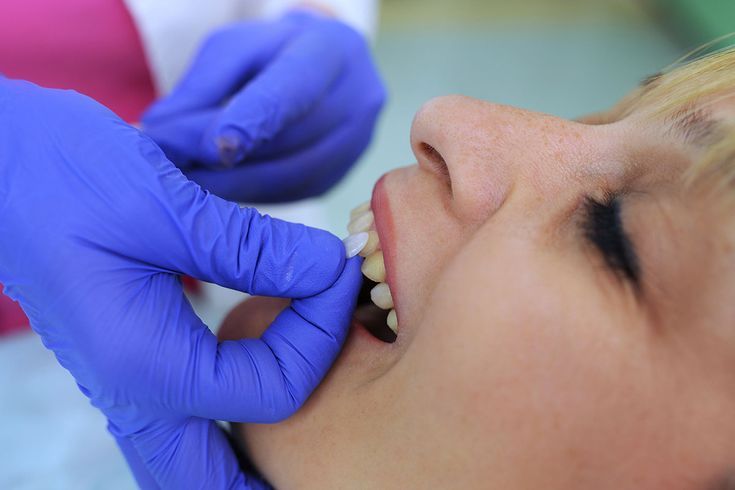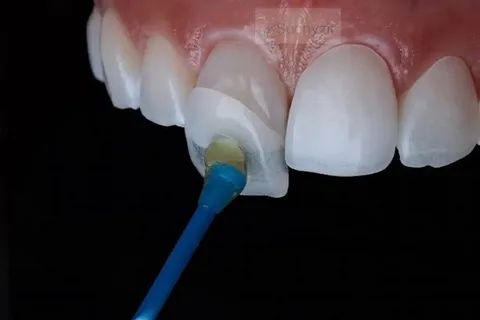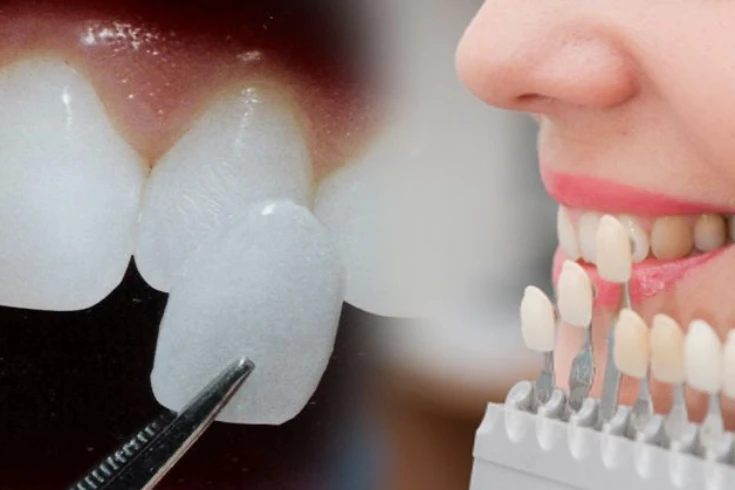As a resident in Texas, you may want to gain an understanding of how much teeth filling costs if you are suffering from tooth decay or a cavity. A dental filling is one of the common treatments that can restore a decayed tooth back to its original state and function thereby protecting the tooth from further damage. Nevertheless, the price is significantly different based on such factors as type of fill material, dentist’s experience, whether you have insurance, and location. This blog deconstructs the influences on teeth filling cost in Texas, types of fillings available, and ways to make this all-important dental procedure cheaper.
What is a Tooth Filling?
Teeth filling is a dental treatment used to restore a tooth that has decayed back to its normal shape and function. Treatment involves removing the decayed part of the tooth and then filling up the cavity with a material like composite resin, amalgam, gold, or porcelain. This aims at avoidance of further decaying and restoring integrity to the tooth.
Factors that Will Most Likely Affect Teeth Filling Cost in Texas
The cost of a filling in Texas may range from $100 to $1,500 for a single filling. This depends on:
Types of Filling Material Used
- Amalgam Fillings: These fillings are silver in color and are durable, thus highly appropriate for the molars. Amalgam fillings cost in a range from $100 to $200. While this is cheaper, it is not as pleasing to the sight as other types of fillings.
- Composite Resin Fillings: composite resin fillings are one of the most popular ones. They match the color of the tooth very well. They are available at a cost ranging between $150 and $250 for a single tooth. They may incur slightly higher costs than amalgam because they are more aesthetic.
- Gold Fillings: Gold fillings, although not very common, last for a very long time. They are not inexpensive, from $300 to $1,000 or more, depending on the amount of filling and the price of gold.
- Porcelain Fillings (Inlays/Onlays): Porcelain fillings are made specially to fit the cavity and is colored to match the color of the tooth. These fillings can be as high as $500 to $1,500 per filling because of the cost of the material as well as the lab work that goes into making it.
Extent of Decay and Size of the Cavity
- The cost of a tooth filling in Texas depends on the level of the tooth’s decay and the magnitude of the cavity. The larger the cavity, the more material and time are required to fill it, which translates into higher costs.
- If two or more surfaces of your tooth are involved with a cavity, this can rise to an additional price. As such, two- and three-surface fillings may be more expensive compared to single-surface fillings.
Tooth Location and Accessibility affecting the teeth filling cost in Texas
- The position of the tooth is a factor, too. The back molars, being more challenging and hard to reach and fill, will require more time and possibly skills.
- In the front teeth, tooth-colored materials, like composite resin, are used. These could be a bit more expensive compared to amalgam but the result is a natural appearance.
Dentist’s Expertise and Clinic Location
- The prices also vary depending on the dentist’s qualification and reputation. Of course, experienced dentists and specialists will charge higher than other dentists.
- Clinics in major metropolitan areas like Dallas, Austin or Houston may charge more compared to one in a smaller town or the countryside because of higher operational expenses.
Additional Treatments and Cost of Anesthesia
- The dentist performs treatment such as pulp cap or root canal treatment before the filling. The dentist will do these treatments before if there is a cavity near the tooth nerve, or if there is large decay.
- Surgical and anesthetic procedures might have to be involved while filling deep cavities within the teeth; this raises the cost.
Average Teeth Filling Cost in Texas According to Type
Here are more specific average costs for the different types of fillings according to Texas.
| Filling Type | Average Cost in Texas |
| Amalgam Fillings | $100- $200 /tooth |
| Composite Resin Fillings | -$150- $250 /tooth |
| Gold Fillings | $300- $1,000 + /tooth |
| Porcelain Fillings | $500- $1,500 /tooth |
These quotations are quotations and may vary by the dentist and type of treatment.
Does dental insurance impact teeth filling Costs in Texas?
As appeared in the previous illustration, dental insurance happens to have an exceptional influence on the out-of-pocket costs applied once a patient receives teeth fillings. Below is how much insurance cover can affect the cost of tooth filling in Texas:
Percentage Limits and Coverage
- Most dental insurance plans pay between 50% and 80%, after the deductible for filling, based on the individual plan details. The higher the coverage percentage, the better the coverage.
- The type of filling may be restricted. Many programs pay for composite fillings only for the front teeth, or they might cover amalgam filling costs for only your molars.
Annual Maximum Limits
Typically, an annual maximum is set up for these dental plans which ranges usually in the $1,000 to $2,000 amount. Once this is reached you’ll pay for all other dental procedure costs.
Waiting Periods and Specific Exclusions
- There are some insurance policies that charge a waiting period for restorative treatments such as fillings. You should know if you’re covered right away or you have to wait for sometime to get your coverages.
- Some cosmetic treatments, like porcelain fillings, may not be covered or would only be partially covered with the lesser price of basic filling.
Suggestions to Minimize Teeth Filling Cost in Texas
In order to cut down on the expense, here are some effective ways how to minimize the teeth filling cost in Texas:
Compare Quotes from Several Dentists
Get quotes from several dental clinics and determine which one offers the lowest quote, which may not necessarily be the “cheapest” as far as quality goes.
Maximize Your Dental Insurance Benefits
Make sure you are utilizing your insurance benefits to their fullest potential. If you need a filling, book an appointment before you reach the maximum limit for that year’s coverage and check to see if the dentist is in your network of insurance.
Dental Discount Plans and Your Payment Options
You may also want to consider a dental discount plan, under which you can actually save money on fillings and other procedures. For those without insurance, payment plans offered by some dentists may help spread the cost out.
Seek Treatment at Dental Schools
Since there are so many students studying at dental schools, the cost of treatment is usually very low, and your money gets you services from experienced dentists who supervise their trainees.
Preventive Care to Avoid Fillings
In addition to that, regularly checking up at the dentist and good oral hygiene can sometimes detect cavities before they cause trouble, thereby altogether avoiding fillings or lowering the level of decay.
Why Getting a Tooth Filling is Important
- Avoids Further Decay: Filling the cavity will prevent further tooth decay and prevent it from reaching deeper layers of the tooth, thus saving the inner pulp from damage.
- Cures Infections: An unsealed cavity may lead to further development of bacteria, causing an abscess or painful toothache that will require root canals or the removal of the said tooth.
- Restores Tooth Function: The filling helps restore the normal function of the damaged tooth. Therefore, it enables you to chew and speak comfortably.
- Tooth Structure Conservation: The dentist fills the cavity to save the overall structure of the tooth. If the dentist does not seal the cavity the tooth may become weaken or break.
- Scales away pain and sensitivity- The dentists does fillings to get rid of the pain and sensitivity due to cavities. In that way, one is in a position to consume hot or cold food items without discomfort.
- Saves money in the future: Rectifying a cavity early with a filling can help avoid further costly procedures, such as in crowns or even root canals later on.
- Improves Oral Health: Treating a tooth with a filling in good time keeps oral hygiene good. It also maintains a distant possibility of dental problems later on.
- Enhances Aesthetics: Due to the utilization of tooth-colored dental fillings such as composite resin, your natural teeth’s appearance or color is maintained.
Conclusion
The teeth filling cost in Texas can fluctuate due to many influential factors such as the type of filling material, the extent of the decay, the expertise of the dentist, etc. These factors will be understood and thus enable one to make informed decisions about dental care and budgeting for the same. Whichever option you consider- amalgam, composite, gold, or porcelain fillings- it is important that you consult a dentist on the best option for your situation. You can reduce the cost of teeth filling in Texas by leveraging dental insurance. You may compare quotes, consider discount plans, and practice good oral hygiene for a healthy and long-lasting smile. If you believe that you may have a cavity or another form of toothache, then visit a local dentist. You can get an accurate estimate to start your treatment immediately.
FAQ’s
- Does dental insurance cover the cost of tooth fillings in Texas?
Yes, most dental insurance plans cover 50%–80% of the cost after the deductible, depending on the plan details. Coverage may be limited to certain filling types and may include annual maximum limits.
- Will my dental insurance cover composite fillings for back teeth?
Some dental insurance plans cover composite fillings only for front teeth or provide coverage for amalgam fillings on molars. It’s best to check with your insurance provider to understand the specific coverage.
- Do fillings require additional treatments or anesthesia?
For deep cavities, the dentist may need to perform additional treatments like pulp capping or root canal therapy before filling. The dentist may use anesthesia which will add the cost.
- Is there a difference in cost based on tooth location?
Yes, back teeth (molars) are harder to reach and fill, making the procedure more time-consuming and costly. In contrast, front teeth may require tooth-colored materials like composite resin, which can be more expensive than amalgam.





